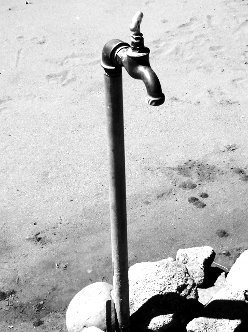Climate depths checked
 Robust new evidence shows that wet regions of the earth are getting wetter and dry regions are getting drier.
Robust new evidence shows that wet regions of the earth are getting wetter and dry regions are getting drier.
But the new British study says the changes are happening at a slower rate than previously thought.
The data came from a massive survey of the saltiness of the world's oceans.
More rain and outflow from rivers in a region of an ocean means sea water gets diluted and therefore becomes less salty, while more evaporation in another region takes away fresh water and leaves salt behind making that region more saline.
Researchers from the University of Southampton used measurements of salinity throughout the global and deep oceans over 60 years to make estimates of the change in global rainfall.
The researchers found that relatively wet regions are getting wetter and dry regions are getting drier both by about 2 per cent over the last 60 years.
They describe the process as an ‘amplification’ of the water cycle.
Previous research indicated that amplification of the water cycle was happening at 7 per cent per 1°C of total global warming.
The new study estimates that amplification happens closer to about three to four per cent per 1°C.
The research team believe this is probably due to a weakening of the atmospheric circulation which transports freshwater from the dry to wet regions of the globe.
“Our findings match what has been predicted by models of a warming climate; as the world gets warmer wet regions will continue to get wetter and dry regions will continue to get drier,” said research leader Dr Nikolaos Skliris.
“Although we have found that this process is happening slower than first thought, if global warming exceeds 3°C, wet regions will likely get more than 10 per cent wetter and dry regions more than 10 per cent drier, which could have disastrous implications for river flows and agriculture.
“The agreement between climate models and observations over the recent past is another important finding of this study because it adds confidence to climate model projections of water cycle amplification under greenhouse gas emission scenarios.”
The study has been published in Scientific Reports.







 Print
Print